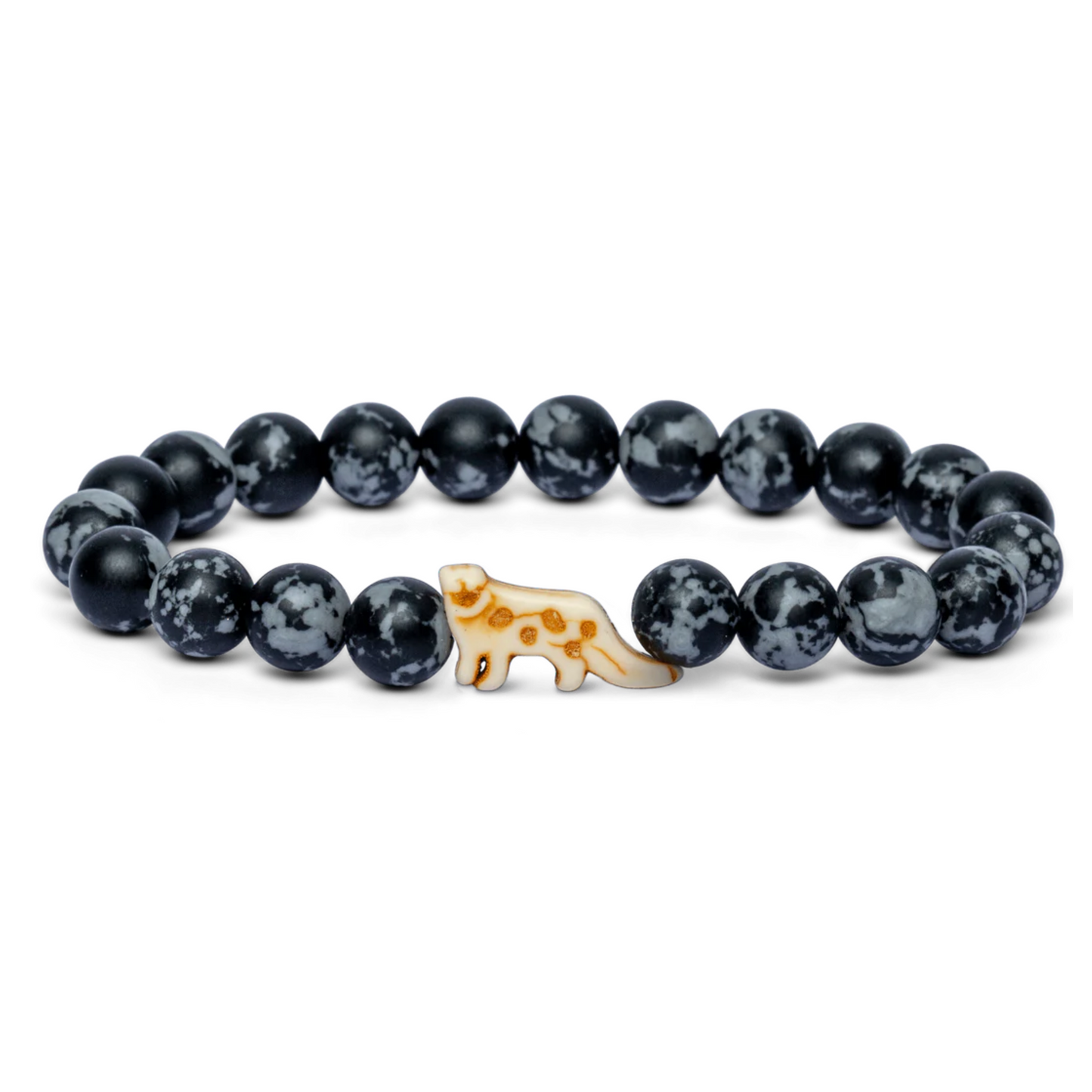Fahlo
Animal Tracking Bracelet - Ascent Snow Leopard - Papillae Stone
Animal Tracking Bracelet - Ascent Snow Leopard - Papillae Stone
Couldn't load pickup availability
Created in partnership with Snow Leopard Conservancy, each bracelet unlocks an interactive tracking map and directly supports snow leopard conservation in the mountains of Central and South Asia. Better bundle up!
Meet your snow leopard and learn their story. Reveal exclusive photos, stats, and updates along the way. Follow their path on an interactive tracking map.
- Brand: Fahlo
- Stone: Wildflower Pink
- Each order supports Snow Leopard Conservancy
- Sizing: Elastic, one size fits most
- QR code provided to unlock interactive map - compatible on smart phones only.
How does tracking work?
- Tracked via multiple methods: GPS collar and motion sensor trail cameras.
- This animal’s safety guarded with the Fahlo Protection Ping™
Every Fahlo tracking experience includes the Fahlo Protection Ping™. This indicates each animal’s unique path may be live, delayed, or historical based on required safety protocol in accordance with our nonprofit partners.
While the experience of following an animal’s journey remains the same for you, we work behind the scenes with our partners to ensure this experience is presented in a way that keeps the animals safe, one step or splash at a time.
Why are snow leopards tracked?
"Historically, it was almost impossible to track snow leopards. Until the late 20th century, little was known about snow leopard biology; these elusive cats inhabit remote mountainous regions that are often difficult for researchers to access. However, successfully tracking these animals provides valuable insights into their behavior, movements, life strategies, and interactions with the human landscape. As conservationists gather more information about snow leopards, they can develop and implement more effective measures to protect these magnificent creatures.”
How are snow leopards tracked?
“Snow leopards are tracked by direct and indirect methods. In direct tracking, snow leopards are captured and fitted with GPS satellite collars, which typically stay in place for about a year, transmitting the animal’s location on a predetermined schedule.
“However, due to the remote habitats of snow leopards and the high costs associated with collar-based tracking, researchers often employ indirect methods. These include the use of motion sensor trail cameras that capture both still photographs and videos to record the presence of snow leopards. As these cats are solitary and home ranges seldom overlap, it is possible to track movement patterns of individual animals through these images. Researchers also look for physical evidence of snow leopards, such as pug (or footprint) marks, scat, and scent markings. Indirect tracking allows researchers to gather important data on snow leopard presence and behavior, especially when direct tracking is impractical.
“The tracking for this animal uses some known historical locations and extrapolates others based on known behaviors (snow leopards move to lower altitudes during the colder months as they follow their prey, they can stay at a kill site for several days, but can travel many kilometers in one day, as well). To safeguard these elusive cats from potential poaching threats, we have deliberately chosen not to disclose exact locations in our tracking data.”
To learn more, visit our partner directly at snowleopardconservancy.org.
Does tracking harm the snow leopards?
“Indirect tracking (trail cameras, sign, and scent surveys) has no effect on the snow leopard as there is no contact between people and the cat.
“Direct tracking (GPS collaring) does require a cat to be tranquilized and handled. During this procedure, researchers place the collar, collect blood samples for health assessment, and take weight and body measurements. While any anesthesia carries a minimal risk, it’s important to note that no snow leopard has ever suffered harm from this process. Furthermore, the collar is designed to not interfere with the cat’s regular activities. Snow Leopard Conservancy does not collar the cats but will utilize the data from organizations and national agencies that do collar.”
To learn more, visit our partner directly at snowleopardconservancy.org.


